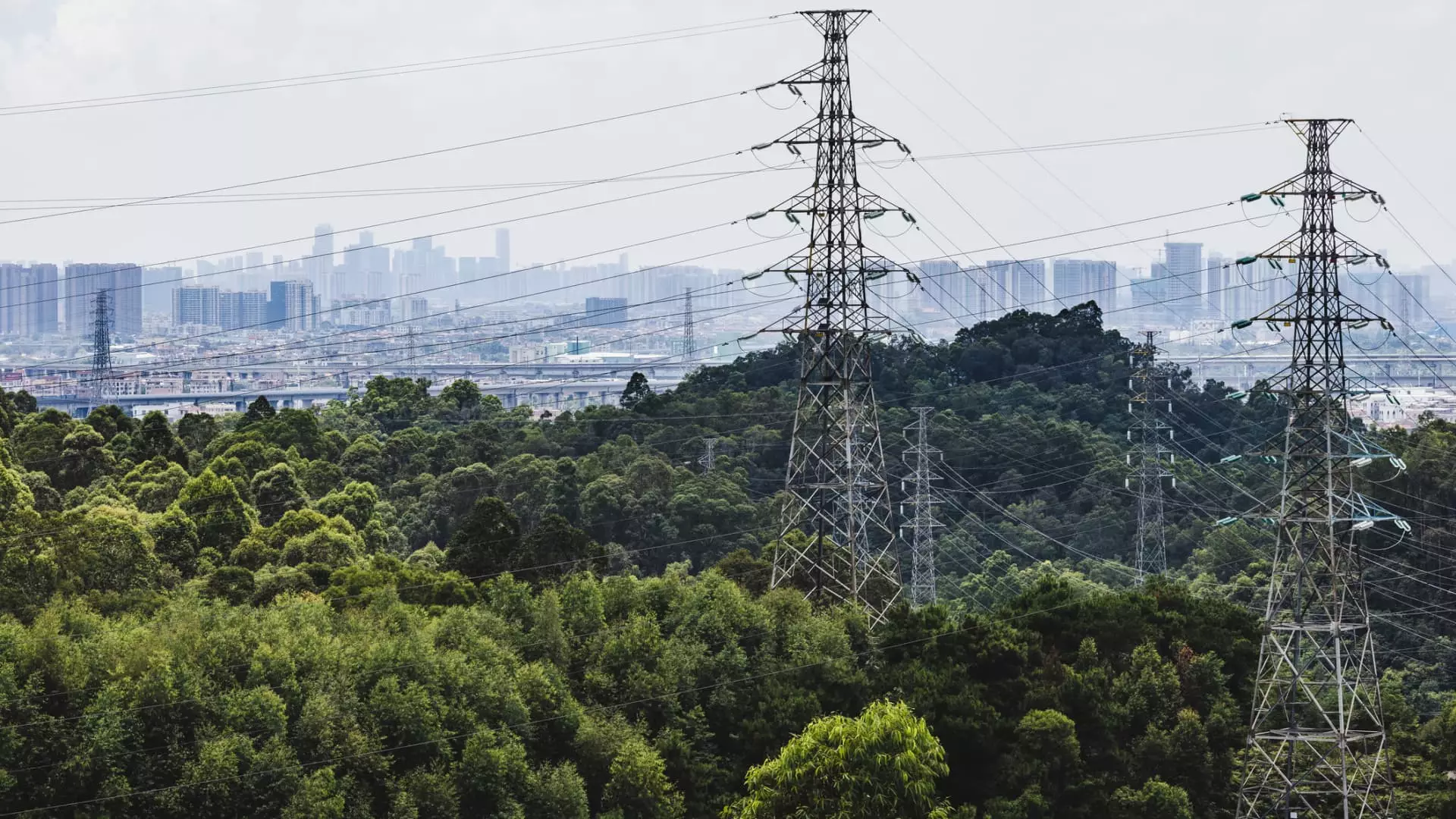In the landscape of American households, a disturbing trend has emerged: the rapid increase in electricity prices that defies the general inflation rate. The Consumer Price Index indicates a staggering 4.5% rise in electricity costs over the past year—nearly double the overall inflation for goods and services. This phenomenon suggests that while the economy may show signs of stabilization, energy costs are spiraling out of control. With the U.S. Energy Information Administration (EIA) projecting further increases through 2026, the situation merits urgent scrutiny.
Electricity expenditures are already a significant burden, with the average American household shelling out about $1,760 in 2023. Yet, disparities among regions complicate the picture, leading to wildly varying electricity bills across the country. This situation raises crucial questions about equitable access to energy and the reliability of our aging infrastructure.
Supply and Demand: A Simple Explanation with Complex Consequences
David Hill, a key figure at the Bipartisan Policy Center, neatly encapsulated the crux of the issue: “It’s a story of supply and demand.” But this simplicity belies underlying complexities, as declining availability of power-generating facilities meets an insatiable increase in demand. Changes in consumer habits—largely driven by technological advancements—have ignited a surge in electricity usage. While energy efficiency improvements have kept demand growth minimal in recent decades, the modern age has ushered in ever-looming needs for data centers and smart technology that place unprecedented strain on the grid.
Unfortunately, the rise in electricity consumption aligns with the decommissioning of older power plants, exacerbating the imbalance. This interdependence of factors hints at a precarious future wherein supply may not only struggle to meet rising demand but also falter under the weight of infrastructure inadequacies.
The Blame Game: Geographical Disparities in Electricity Prices
Electricity prices are not just a national issue; they are unevenly distributed across different regions. While the national average stands around 17 cents per kilowatt-hour, some households in states like Hawaii could see rates soar to nearly 41 cents per kWh, crippling budgets. According to EIA data, regions such as the Pacific and Middle Atlantic might be the hardest hit, with expected increases that may outstrip national averages.
Economist Joe Seydl emphasizes that the pricing abnormalities stem from regional factors rather than global market trends, complicating the energy landscape further. For households in already high-cost areas, the future may look bleak if rapid changes do not occur in how we manage energy allocation and supply.
The Data Center Effect: A Hidden Energy Drain
One of the most alarming contributors to escalating electricity demand is the burgeoning number of data centers. These sprawling complexes, essential for cloud computing and artificial intelligence, have seen their energy consumption triple in the last decade. Projections suggest this demand could double or even triple again by 2028, collapsing any illusions of a manageable energy landscape. This excessive draw on the grid raises substantial concerns, considering projected electricity consumption for data applications will exceed that for traditional industries by 2030.
As the economy evolves, the harmonization of energy use among new and old industries becomes critical. The current trajectory not only threatens existing infrastructure but poses a dire risk for future energy availability.
Infrastructure: The Achilles’ Heel of America’s Energy Paradigm
As prices rise, it becomes increasingly clear that the real culprits behind the upheaval may lie within America’s aging electrical infrastructure. The EIA warns that transmission line growth is far below the targets needed to maintain a reliable power supply unless significant action is taken. Current delivery timelines for essential equipment stretch from mere weeks in 2019 to several years today, crippling our ability to respond to growing needs.
Michael Cembalest of J.P. Morgan has painted a grim portrait, with approximately half of U.S. transformers nearing the end of their utility. The critical situation implies we cannot merely blame demand trends; the roots of this issue run deep into neglected infrastructure that is unable to support the nation’s increasing electrification.
Charting a Path Forward: The Need for Innovation
Given the shackles of outdated transmission systems and rapidly rising consumption, one might rightfully question the prudence of transitioning away from traditional energy sources. While reducing greenhouse gas emissions and pushing for electrification are noble goals, outright abandonment of fossil fuels without a robust framework for energy supply reflects a reckless disregard for economic realities.
A balanced approach is necessary—sustaining our commitments to sustainability while innovating within the existing framework of our energy infrastructure. Investments in new technologies, reforming regulatory frameworks, and transitioning energy policies will be pivotal in averting a crisis. If we fail to heed these warnings, the looming specter of unaffordable electricity will become an inescapable reality for countless American households.

